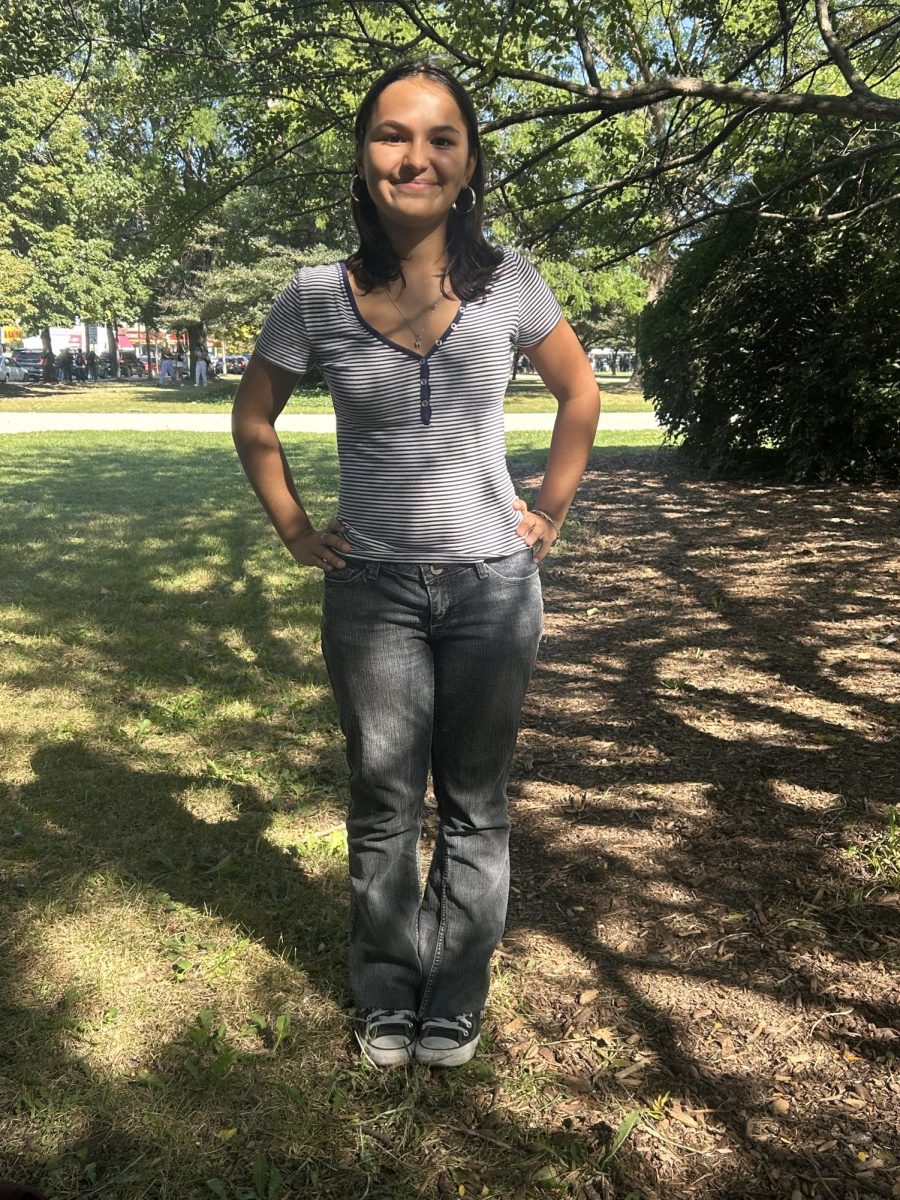By Nicole Johnson
nejohnson4.wordpress.com
Nahin Cano, Div. 462 walks into the Starbucks in Roscoe Village. She is greeted by the familiar baristas who know both Cano and her usual order well. The baristas know her so well, they give Cano her coffee for free. Cano heads back to school, coffee in hand. This is her second visit to Starbucks today.
Cano, like many adolescents today, has an addiction. Cano’s addiction is caffeine.
“I started drinking coffee when I was in grade school,” Cano said. “But before mainly just like cream and sugar; basically only cream. And progressively, it’s like drop the cream, just sugar. And then, drop the sugar, just straight black coffee.”
Unlike most people, the large amounts of coffee that Cano drinks do not make her feel hyper or jumpy. Instead, they produce a calming effect.
“It doesn’t work anymore, like keeping me up or anything,” Cano said. “It kind of calms me down if I’m stressed. I could drink a cup and go to bed right after.”
Although all are not necessarily considered “harmful,” teenage addictions are more common than some may think. While some students deal with addictions, others have compulsions. Compulsions are behaviors caused by an obsessive thought. Addictions are habits or behaviors that are not necessarily caused by obsessive thinking. Although it can sometimes be difficult to define the line between the two, a behavior is diagnosed as an addiction or compulsion when it becomes harmful or interferes with daily life. Both are common among teens, and while some are almost harmless, others can endanger mental and physical health.
Mrs. Gilson, Lane’s psychologist, works with students struggling with addictions that are rooted in anxiety. She uses relaxation techniques to help students come to terms with their anxiety, while replacing their addictions with more helpful behaviors. She also introduces students to protective factors which include getting eight to nine hours of sleep each night, relaxation, planning ahead, and setting realistic goals. Each of these techniques aims to lower anxiety and improve overall health.
“If you’re engaging in these habits, it is most probably a manifestation of anxiety,” Mrs. Gilson said. “That’s kind of a maladaptive way of dealing with the stressor that you’re having. There are better ways to address your stress.”
Cano, who has become so accustomed to drinking excessive amounts of caffeine, feels symptoms of withdrawal if she does not consume any.
“I think it affects me more when I don’t have [coffee],” Cano said. “Then I’ll get really bad stomach aches and then I just can’t focus on anything else because of that.”
While Cano does not consider her addiction harmful, she realizes that the amount of coffee she drinks may be too much.
“I think the worst that I’ve ever done is when one day I had [skating] practice in the morning, a debate thing to do after that, then I was going to go out with friends,” Cano said. “That was like seven cups of coffee in a day. That was really bad… I knew that it couldn’t happen again.”
Tammy Chen, Div. 469, has a passion for drawing that borders on addiction. She feels it is a major part of her life. Drawing is so central to who she is that she does it without even thinking about it, and feels anxious when she goes too long without drawing.
“I started drawing when I was little,” Chen said. “My mom says when I was younger, instead of going outside or watching TV, I’d just draw. I love drawing people and anything relating to nature, and making a connection between the two.”
Chen draws during the majority of the day, and only takes a break when she goes out or goes to sleep. Otherwise, she tries to bring her sketch book with her anywhere that she can to avoid the feeling of anxiety that comes when she is not drawing. Although Chen’s love of art brings so much joy to her life, she has noticed the negative repercussions that can come with an addiction, no matter how harmless it may seem.
“I’d be lying if I said I never got caught by teachers or in trouble,” Chen said. “It became a bit more ‘problematic’ I guess last year because on tests and quizzes, instead of completing them, I’d draw all over it and it angered a lot of my teachers. This year, it’s almost every day that I get told to put my sketchbook away and pay attention.”
While some addictions can be the result of passion or a feeling of happiness that results in a certain behavior or substance, other addictions are the result of anxiety.
Maribel Jaramillo, Div. 454, feels that her addiction is the result of stress.
“I have a really weird addiction where I like poking people’s bruises,” said Maribel Jaramillo, Div. 454. “It started my sophomore year, when I was in archery. I used to get really bad bruises, and I thought that they were kind of cool, like battle scars. They were just purples and greens and yellows and I thought it would be really cool to poke them.”
After Jaramillo dropped archery, she no longer developed bruises. However, some of her friends tend to bruise easily, and Jaramillo began to ask them if she could poke their bruises.
“I know some of my friends do bruise easily,” Jaramillo said, “so they’ll be like ‘oh I have a bruise’ and I’ll just look at it and they’ll see me looking at it and I just look at them like ‘so can I poke it?’ and they’ll be like ‘sure just don’t press too hard.’ I’m surprised, but no one’s every asked why [ I do it].”
Jaramillo does believe that anxiety may be at the root of her addiction. Mrs. Gilson likened the behavior to nail-biting, as a way for a person to relieve some of the anxiety they are feeling, even if only for a short time.
“I usually get anxious when I start thinking about all the school work I have to do or personal problems,” Jaramillo said. “When I poke people’s bruises, I’m too busy poking them to think about any of the other stuff that crosses my mind. So I’d have to say it distracts me from just about any small problem I have. But I kind of don’t want to [get to the root of it] because I’m scared that it’s going to open up a whole can of worms and I’ll just realize that I have a lot more issues than I thought I do.”
Although neither Cano, Chen, nor Jaramillo consider their addictions to be “harmful,” each has a different view on the thought of seeking help.
After realizing that the amount of coffee she consumed cost up to $40 a week, Cano tried to cut back on her caffeine intake.
“[My friends] have definitely noticed and they’re like ‘you need to cut back,’” Cano said, “which is why last month I kind of stopped drinking [coffee] for a while. I did stop for maybe three weeks. Instead of drinking coffee though, I just switched to tea. That ended really quickly after it started.”
Chen, on the other hand, has no desire to stop drawing, and even sees her addiction as something positive and helpful.
“If anything, I think I love my addiction because it has brought more good than bad to my life,” Chen said.





